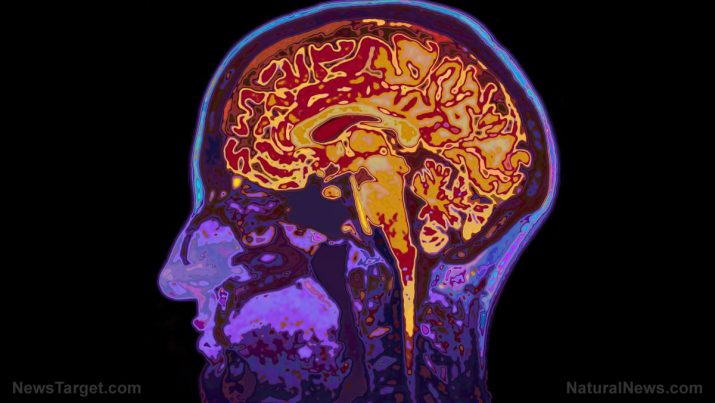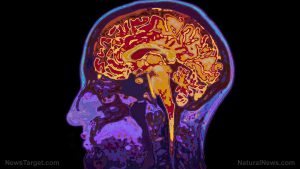
Oligodendroglioma – causes, side effects and treatments at NaturalPedia.com
Thursday, May 24, 2018 by Zoey Sky
http://www.naturalpedia.com/oligodendroglioma-causes-side-effects-and-treatments-at-naturalpedia-com.html

An oligodendroglioma is a rare type of glioma brain tumor.
At least three out of every 100, or three percent, of tumors are oligodendrogliomas. These tumors develop from cells known as oligodendrocytes.
Oligodendrocytes make up the fatty white substance that covers nerves that are often found in the cerebrum, in the temporal, or frontal lobes.
Oligodendroglioma can be low grade/slow growing or high grade/fast growing. While the tumors often develop in adults, they can also be diagnosed in young children. In rare cases, an oligodendroglioma can spread within the central nervous system, in the fluid that surrounds the brain, and spinal cord.

Known side effects of oligodendroglioma
There are various side effects associated with oligodendroglioma. Patients experience different side effects depending on the size of the tumor and the part of the brain that the tumor develops in.
In most cases, oligodendrogliomas are often misdiagnosed as a stroke. The side effects progress over time, and patients may seek further diagnosis. Unfortunately, in these cases, the tumor has already grown before a proper diagnosis is given.
The side effects of a tumor in the frontal lobe may include:
- Changes in behavior and personality
- Headaches
- Loss of vision
- Memory loss
- Paralysis
- Seizures
The side effects of a tumor located in the parietal lobe may include:
- Changes to the sense of touch
- Difficulty calculating, reading, and writing
- Difficulty concentrating
- Difficulty recognizing and interpreting sensations
- Inability to recognize objects by touch
- Problems with coordination and balance
The side effects of a tumor located in the temporal lobe may include:
- Hallucinations
- Hearing loss
- Inability to understand language and music
- Memory loss
- Seizures
Body systems harmed by oligodendroglioma
Oligodendroglioma may cause the following complications:
- Glioma
- Intracranial calcification
- Primary brain neoplasm
Food items or nutrients that may prevent oligodendroglioma
The following foods or nutrients can help prevent oligodendroglioma:
- Fluids — Staying hydrated is crucial to staying healthy. Drink at least eight to 10 glasses of water every day. Fluids can help the body heal faster by flushing out excess toxins.
- Fruits and vegetables — Your diet should be made up of a third of fruits and vegetables because they are rich in fiber, minerals, and vitamins.
- Protein-rich foods — Eat at least two to three servings of protein-rich food daily. Sources include dairy products, eggs, fish, nuts, poultry, and nut butters. Protein molecules are “the building blocks of the body.” Protein allows your body to perform important functions like the growth and repair of tissue and the maintenance of the immune system.
- Starchy carbohydrate foods — Make sure your diet consists of at least a third of starchy carbohydrate foods like brown rice, brown pasta, plantains, potatoes, whole grain cereals, whole wheat bread, and yam. Carbohydrates are the body’s main source of energy.
Treatments, management plans for oligodendroglioma
There are several treatment options for oligodendroglioma.
Treatment for oligodendroglioma is usually influenced by several factors like your overall health, the grade and location of the tumor, and the final diagnosis from a neurosurgeon.
Treatment options may include:
- Chemotherapy — This treatment involves cytotoxic drugs that can help kill cancer cells. The drugs may be used before and after radiotherapy. Chemotherapy can also help shrink brain tumors, especially those that are hard to surgically remove. This option is suitable for malignant tumors and reoccurring cases.
- Medication — Steroids can help minimize the swelling around the tumor. Anticonvulsants can be given to patients who are experiencing seizures.
- Radiotherapy — Radiotherapy involves the use of high energy rays that can help eliminate tiny fragments of the tumor that may remain. Radiotherapy is also used to treat malignant tumors.
- Surgery — Surgery is often used to treat low grade oligodendrogliomas. But since surgery doesn’t completely remove the tumor, this option can be paired with other therapies post-surgery to prevent re-occurrence.
Where to learn more
- 300% Increased brain cancer risk for long-term users of cell phones and cordless phones, new study reveals
- Diet May Be the Key to Prevention and Treatment of Brain Tumors
- The link between aspartame and brain tumors: What the FDA never told you about artificial sweeteners
- Rampant mobile phone use causing brain tumors to skyrocket… while corporate-run media remains in denial
- Taking birth control pills more than doubles brain tumor risk in five years
Summary
An oligodendroglioma is a rare type of glioma brain tumor. These tumors develop from cells known as oligodendrocytes.
The side effects of an oligodendroglioma in the frontal lobe may include paralysis and seizures.
Oligodendroglioma may cause complications like glioma, intracranial calcification, and primary brain neoplasm.
Fluids, fruits and vegetables, protein-rich foods, and starchy carbohydrate foods can help prevent oligodendroglioma.
Treatment options for oligodendroglioma may include chemotherapy, medication, radiotherapy, and surgery.
Sources include:
Tagged Under: Tags: oligodendroglioma





